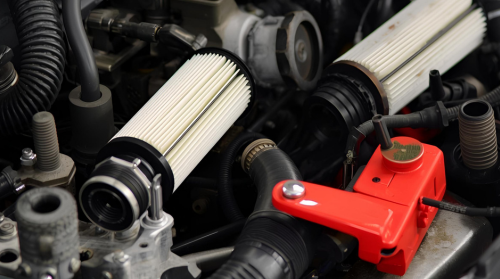Digitizing product catalogs is now a crucial stage for those looking to sell auto parts and replacement components in the online environment. For manufacturers, distributors, and specialized companies in the automotive sector, this transformation goes far beyond just “being online”: it's about organizing, standardizing, and making information efficiently available to the entire commercial chain — from the industry to the repair shop.
Why the digital catalog is the first step
Creating a digital catalog is like setting up your store's showcase in the online world. The clearer and better structured it is, the easier it will be for buyers to find what they need — especially in a technical sector like auto parts, where compatibility, codes, and descriptions make all the difference in the purchasing decision.
According to McKinsey & Company, 71% of industrial buyers already prefer digital channels to search for products and compare options. In the auto parts replacement sector, this behavior is growing rapidly, with marketplaces and specialized platforms becoming increasingly relevant.
The importance of standardization and sharing
Having an updated digital catalog is just the beginning. The difference lies in how it is shared and used by other links in the chain: distributors, sales reps, vendors, and even workshops that buy directly. The more standardized and integrated the catalog structure is — with well-defined SKUs, prices, images, and technical attributes — the greater the potential for scaling sales in an organized way.
What you need to get started
To build a professional digital catalog, it’s important to gather data such as:
- SKU list and internal codes;
- Updated prices and commercial policies;
- Available inventory;
- Clear descriptions with attributes and variants;
- High-resolution images aligned with digital platform standards;
In the case of auto parts, it’s essential to indicate vehicle applications and compatibility.
This work can be done internally or with support from companies specialized in digital cataloging. The key is to ensure that the information is well-organized in a structured format, ready to be distributed across multiple channels.
More efficiency for sellers — and for buyers
By digitizing their catalogs, auto parts businesses gain speed in managing prices and inventory, reduce operational errors, and simplify ongoing data updates. For buyers — whether a repair shop, a local auto parts store, or a technical buyer — this means more trust, speed, and access to the right information at the moment of decision.
Selling online is not just about opening a digital channel. It’s about rethinking how information flows between all parties involved in the sale — saving time, increasing product visibility, and creating new opportunities for commercial growth.
If your company hasn’t started yet, this might be the ideal time. Digital transformation is no longer a trend: it's the path to grow efficiently and predictably in a market that demands agility, transparency, and integration.











